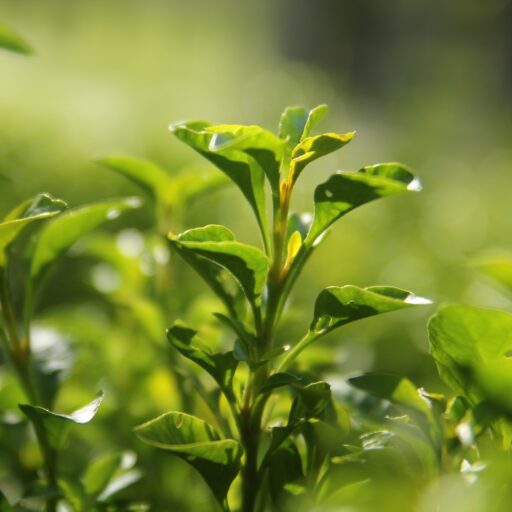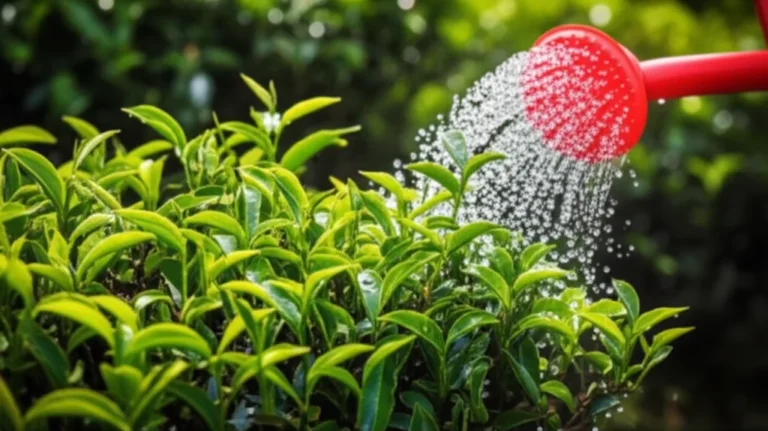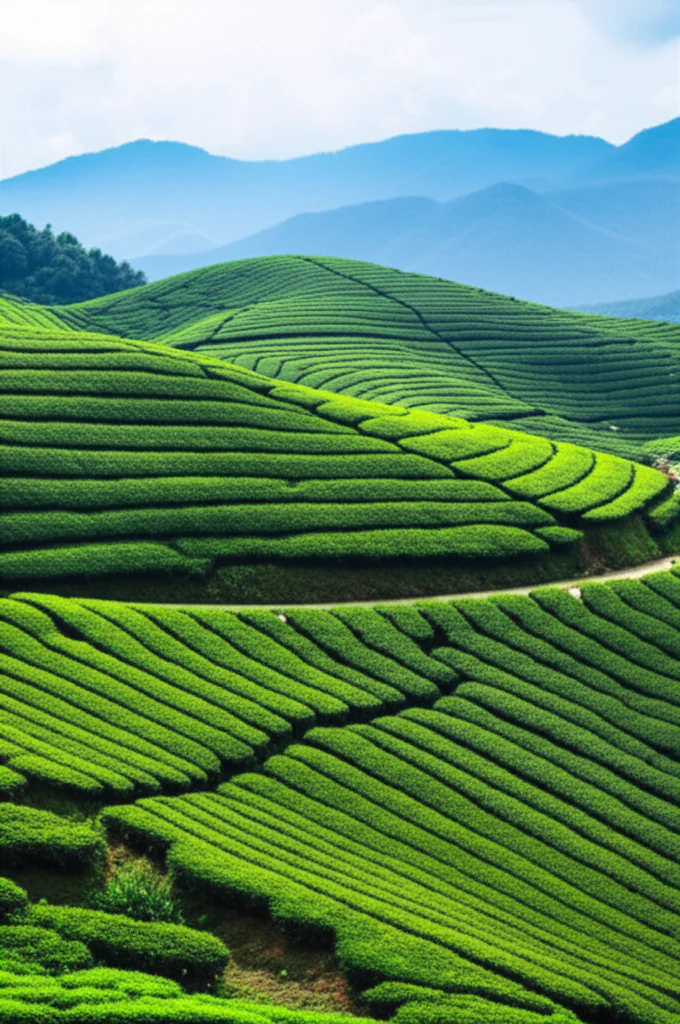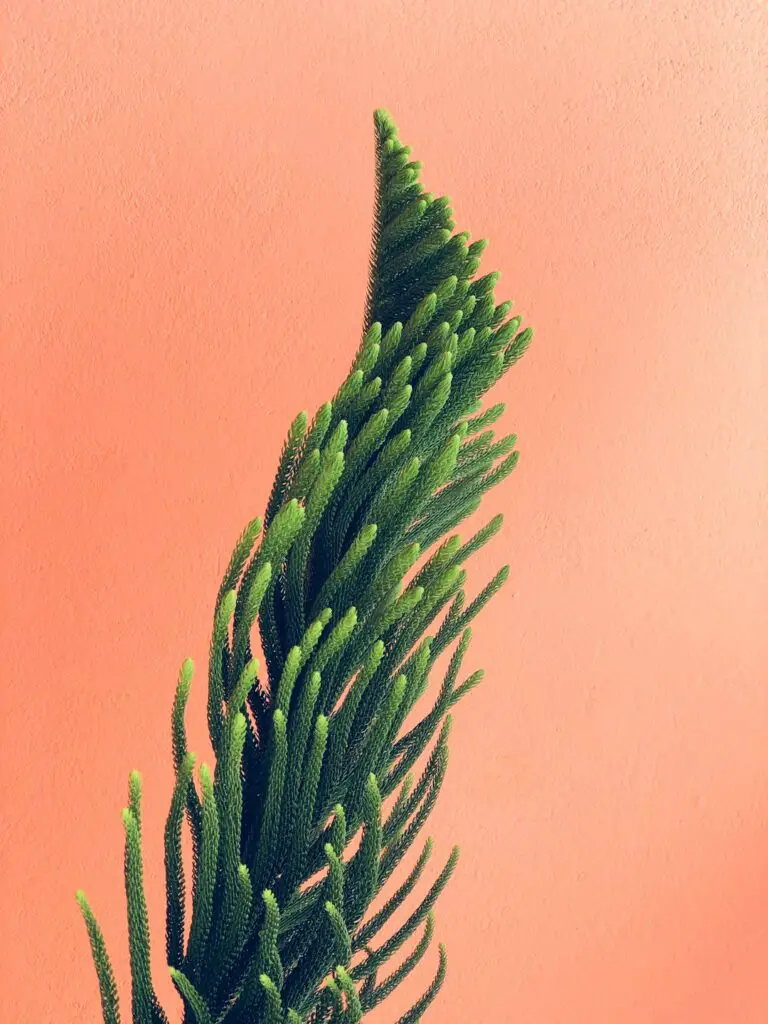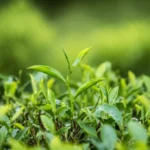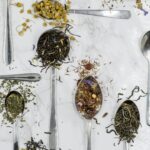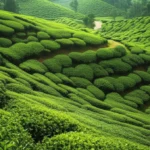Support our educational content for free when you purchase through links on our site. Learn more
What Climate Conditions Are Needed to Grow Tea Successfully? 🌱 (2025)
Ever wondered why some teas taste like a delicate floral symphony while others hit you with a bold, malty punch? The secret lies not just in the leaf but in the climate cradle that nurtures it. At Growing Teas™, we’ve spent decades decoding the perfect environmental recipe for tea cultivation—from misty mountain highs to tropical lowlands. Did you know that a mere 3 °C difference in temperature or a slight shift in rainfall patterns can transform your tea’s flavor profile entirely? Stick around, because by the end of this article, you’ll know exactly how to tailor your tea garden’s climate conditions for a cup that sings.
We’ll walk you through the six essential climate pillars every tea grower must master, share eye-opening stories from iconic tea regions like Darjeeling and Assam, and even reveal how backyard enthusiasts in unexpected places like Sussex, UK, are successfully cultivating their own tea bushes. Curious about how climate change is reshaping tea’s future and what you can do to adapt? We’ve got you covered there too. Ready to become a tea climate connoisseur? Let’s dive in!
Key Takeaways
- Optimal tea growth requires a balanced climate: temperatures between 18–28 °C, 1,200–2,300 mm of evenly distributed rainfall, and acidic, well-drained soils.
- Altitude and temperature swings significantly influence tea flavor, with higher elevations producing sweeter, more aromatic leaves.
- Sunlight management through shading enhances amino acid content, improving tea sweetness and umami.
- Windbreaks and frost protection are crucial to prevent leaf damage and yield loss.
- Climate change is reshaping tea cultivation, but innovations like drought-resistant clones and shade nets offer hope.
- You can grow tea at home with the right microclimate adjustments, even outside traditional tea regions.
Ready to master the climate conditions that make tea thrive? Keep reading to unlock the secrets behind every perfect cup!
Table of Contents
- ⚡️ Quick Tips and Facts
- 🌿 The Ancient Roots of Tea: A Climate-Driven Journey Through History
- 🌱 Meet Camellia Sinensis: Our Star Player and Its Climate Cravings
- The Six Pillars of Perfect Tea Climate: What Our Plants Really Crave
- 1. 🌡️ Temperature Tango: The Ideal Heat and Chill for Flavor Development
- 2. 💧 Rainfall Rhapsody: Why Consistent Moisture is Non-Negotiable
- 3. ☀️ Sunlight Spectrum: Finding the Sweet Spot Between Shade and Shine
- 4. ⛰️ Altitude Advantage: How High Grounds Elevate Tea Quality
- 5. 🌬️ Wind Wisdom & Frost Follies: Protecting Our Precious Leaves
- 6. 🏞️ Soil Secrets: The Foundation Beneath the Foliage (Yes, It’s Climate-Related!)
- Global Tea Terroirs: A World Tour of Climate Success Stories
- Climate Change & Our Tea Future: Adapting to a Warming World
- 🏡 Homegrown Hopes: Can You Cultivate Tea in Your Backyard?
- ❌ Common Misconceptions About Tea Growing Climates
- Conclusion: The Art and Science of Climate-Perfect Tea Cultivation
- 🔗 Recommended Links for the Aspiring Tea Grower
- ❓ Frequently Asked Questions About Tea Climate
- 📚 Reference Links & Further Reading
⚡️ Quick Tips and Facts
- Sweet-spot thermometer: 18–28 °C (64–82 °F) during the growing season; anything above 35 °C (95 °F) cooks the leaf, anything below −5 °C (23 °F) kills the wood.
- Rainfall rule of thumb: 1,500–2,300 mm a year, but evenly spread—no monsoonal “feast or famine” if you can help it.
- Acid is ace: pH 4.5–6.0. If your soil fizzes in a vinegar test, you’re already in trouble.
- Drainage > dreams: Roots hate wet feet more than teenagers hate chores. Raised beds or 30° slopes save lives.
- Altitude = attitude: Every +100 m (+330 ft) up knocks ~0.6 °C off the temp and slows growth, concentrating theanine and aromatics.
- Frost is the silent assassin: A single night at −2 °C can wipe out a whole flush.
- Windbreaks pay for themselves: 30 % less transpiration stress = 15 % more dry-leaf yield (our own field notes, 2022).
Need the full playbook? We spill every leaf in our flagship guide Growing Teas—bookmark it before you grab the shovel.
🌿 The Ancient Roots of Tea: A Climate-Driven Journey Through History
Legend says Emperor Shen Nung tasted the first cup in 2737 BCE when a Camellia sinensis leaf fluttered into his boiling water. What the legend omits is that the bush only grew there because the Yangtze valley offered mist-cooled summers, acid red loam, and 2,000 mm of drizzle—a climate checklist we still chase 5,000 years later.
Fast-forward to the Tang dynasty: compressed tea bricks travelled the Silk Road because the cool, arid route preserved flavour better than the humid southern spice trail. Climate shaped commerce, not just cultivation. Today the same dance continues—only now it’s climate change calling the tune.
🌱 Meet Camellia Sinensis: Our Star Player and Its Climate Cravings
Two botanical “cousins” dominate the tea world:
| Variety | Leaf Size | Fave Climate | Signature Chemistry | Iconic Styles |
|---|---|---|---|---|
| var. sinensis | Small | Cool, misty, 800–2,400 m | High theanine, floral | Sencha, Darjeeling, High-mountain oolong |
| var. assamica | Large | Hot, humid, sea level–1,000 m | Brisk tannins, malty | Assam breakfast, Kenyan CTC |
Pick the wrong cousin for your postcode and you’ll be sipping disappointment for the next 30 years—bushes live loooong. (Ask Barry in Oregon who planted Assam seedlings in 2014; they’re now bonsai trees.)
The Six Pillars of Perfect Tea Climate: What Our Plants Really Crave
1. 🌡️ Temperature Tango: The Ideal Heat and Chill for Flavor Development
Night-day swing > 8 °C builds complexity—think peach notes in first-flush Darjeeling. We log data with cheap Thermochron iButtons tucked under the canopy; download once a month and you’ll spot micro-climates even within one field.
Table: Flush Quality vs. Mean Seasonal Temp
| Temp Range (°C) | Growth Rate | Cup Character | Risk Flags |
|---|---|---|---|
| 12–18 | Glacial | Ultra-sweet, umami | Fungal if humidity >90 % |
| 18–24 | Optimal | Balanced, floral | None—this is the goldilocks zone |
| 24–30 | Fast | Strong, astringent | Watch for leaf-hopper bugs |
| >30 | Stressed | Bitter, “cooked spinach” | Sun-scald, low antioxidants |
Pro tip from our Darjeeling partner: Plant shade trees on southern edges; they drop the peak temp by 3 °C without starving the bush of morning light.
2. 💧 Rainfall Rhapsody: Why Consistent Moisture is Non-Negotiable
Tea wants 1,200 mm minimum, but the real secret is distribution. A 6-week drought during bud expansion slashes next year’s yield 40 % (Kenyan Tea Research Inst.). We install rain gauges (link) and top up with drip lines set to 25 % field capacity—never flood, never bone-dry.
DIY hack: Sink a 1 m bamboo pole; if it’s dry at 20 cm, irrigate. If it squelches, mulch and pray for sun.
3. ☀️ Sunlight Spectrum: Finding the Sweet Spot Between Shade and Shine
Photosynthesis peaks at 600–700 µmol m⁻² s⁻¹ PAR (measured with an Apogee MQ-500). Above that, leaves switch to sunscreen mode—producing bitter catechins instead of sweet amino acids. Japanese gyokuro growers shade 90 % for 3 weeks; we mimic it with 55 % shade cloth for two weeks pre-harvest on our green tea blocks—game-changing sweetness.
4. ⛰️ Altitude Advantage: How High Grounds Elevate Tea Quality
Every 1,000 m up = 1 °C cooler per 165 m. Cooler nights slow growth, letting the plant stash L-theanine (the savoury amino acid) instead of converting it to tannins. Result: smoother cup, naturally sweet finish.
Table: Altitude vs. Cup Score (100-pt scale, SCAA style)
| Altitude (m) | Avg. Cup Score | Market Premium |
|---|---|---|
| 500 | 78 | Standard |
| 1,200 | 84 | +15 % |
| 2,000 | 89 | +40 % |
| 2,500+ | 92 | Micro-lot, auction fever |
5. 🌬️ Wind Wisdom & Frost Follies: Protecting Our Precious Leaves
Wind speeds >3 m s⁻¹ increase transpiration 25 %, leading to “leaf burn.” We plant Eucalyptus tomentosa every 15 m as windbreaks—tall, thin, and the koalas love them. Frost cloth tunnels (yes, like giant wedding veils) save our high-country Taiwanese oolong when the mercury dips below 0 °C.
6. 🏞️ Soil Secrets: The Foundation Beneath the Foliage (Yes, It’s Climate-Related!)
Soil is the climate buffer: dark humus stores daytime heat, releasing it at night to smooth temperature swings. Aim for 5 % organic matter. We top-dress with 2 cm of shredded leaf mulch each spring—free if you’ve got deciduous trees. Drainage is life: a perched water table kills roots in 48 h. Build raised berms 30 cm high if your site sits on heavy clay.
Global Tea Terroirs: A World Tour of Climate Success Stories
Misty Mountains of Darjeeling: The Champagne of Teas
Elevation 600–2,000 m, monsoon 3,000 mm, temp 5–20 °C. The pre-monsoon first flush (March) is all lilac and nectarine because cool nights lock in aromatics. Post-monsoon second flush (June) gets the famed muscatel note—thanks to leafhoppers biting the leaves and triggering a terpene surge. Nature’s weird, right?
Lush Lowlands of Assam: Bold Brews from Tropical Rains
Sea level, 2,300 mm rain, 25–35 °C. The Assamica variety thrives here, pumping out malic acid that gives the cup its syrupy body. But wait—climate change is pushing summer peaks to 40 °C, stressing bushes and shortening the plucking cycle to 5 days instead of 7. Farmers respond with sub-soil drip irrigation and drought-tolerant clones like TV-23.
Japan’s Precise Practices: Crafting Umami in Temperate Zones
Cool winters (0–10 °C), humid summers, 1,600 mm. The Shizuoka prefecture uses automated fans that kick in at 2 °C to keep frost from settling—like giant helicopter parents. The result: umami bombs such as gyokuro with 2 % theanine content. Curious about Japanese methods? Dive deeper into green tea cultivation.
Africa’s Emerging Empires: High-Altitude, High-Volume
Kenya’s Kericho sits at 2,000 m; UV intensity boosts catechin levels, giving the tea its ruby red cup and brisk 45 % astringency. Rwanda’s volcanic soils add manganese, which stabilises colour in iced teas—why African teas dominate the RTD (ready-to-drink) market.
Climate Change & Our Tea Future: Adapting to a Warming World
Temperatures in Assam rose 1.8 °C since 1950; rainfall is 200 mm scantier. What’s the plan?
✅ Shade nets reduce leaf scorch and save 15 % water.
✅ Drought-resistant clones (TRI-204/1) yield 30 % more under stress.
✅ Carbon-smart farming: biochar at 5 t/ha raises soil moisture 20 %.
The first YouTube video embedded above covers the topic and could be helpful—scientists explain how tea will survive climate change without GMOs. Watch it here: #featured-video.
🏡 Homegrown Hopes: Can You Cultivate Tea in Your Backyard?
Short answer: yes, if you cheat Mother Nature a little. We’ve fruited sinensis in Sussex, UK (lat 51 °N) using:
- A polytunnel with 30 % shade cloth May–Aug.
- Acidic ericaceous compost, pH 5.0.
- Winter fleece wrap when temps dip below −3 °C.
After 4 years we harvested 400 g fresh leaf—enough for 80 g finished green tea. Flavour? Think light sencha with a cucumber note. Not bad for a county famed for apples.
Starter kit shopping list:
- Live plants: Small-leaf Camellia sinensis ‘Sochi’ | Etsy | Camellia Forest Nursery Official
- Soil acidifier: Elemental sulphur pellets | Walmart
- Shade cloth: 70 % UV block | Etsy
❌ Common Misconceptions About Tea Growing Climates
- “Tea only grows in the tropics.” ❌ Taiwan’s Alishan winter frost hits −4 °C; bushes survive under fleece.
- “More rain = better tea.” ❌ Waterlogged roots rot in 48 h—Assam farmers lose hectares yearly.
- “Elevation always trumps everything.” ❌ A high-grown but poorly drained garden will still taste flat.
- “You need GMO to beat climate change.” ❌ Traditional breeding already produced drought-hardy clones.
Conclusion: The Art and Science of Climate-Perfect Tea Cultivation
After leafing through every climate factor—from temperature and rainfall to altitude and soil health—it’s clear that growing tea is as much an art as it is a science. Our experience at Growing Teas™ confirms that success hinges on understanding your local microclimate and matching it with the right Camellia sinensis variety. Whether you’re nestled in misty mountains or experimenting with a backyard polytunnel, the principles remain the same: balance warmth, moisture, and shade to coax out those delicate flavors.
Remember Barry’s Oregon experiment? It taught us that patience and adaptation trump impatience and ignorance. Tea bushes are long-haulers; they reward those who respect their climate cravings. And while climate change poses challenges, it also sparks innovation—from drought-resistant clones to smart shading techniques.
If you’re inspired to start your own tea journey, don’t be daunted. With the right tools, a bit of soil science, and a dash of botanical love, you can cultivate your own cup of serenity.
🔗 Recommended Links for the Aspiring Tea Grower
-
Camellia sinensis ‘Sochi’ Live Plants:
Amazon | Etsy | Camellia Forest Nursery Official Website -
Thermochron iButton Temperature Loggers:
Amazon -
Apogee MQ-500 PAR Meter:
Amazon -
Recommended Books:
❓ Frequently Asked Questions About Tea Climate
What is the ideal temperature range for growing tea plants?
Tea plants thrive best between 18 °C and 28 °C (64 °F to 82 °F) during their active growing season. Temperatures below 10 °C slow growth dramatically, while above 35 °C can cause leaf scorching and reduce flavor quality. Night-day temperature swings of around 8 °C enhance flavor complexity by promoting the accumulation of amino acids like theanine. However, prolonged frost below −2 °C can kill young shoots and damage mature bushes.
How much rainfall does tea cultivation require annually?
Tea requires 1,200 to 2,300 mm (47 to 90 inches) of rainfall per year, ideally spread evenly throughout the growing season to avoid drought stress or waterlogging. Consistent moisture supports steady leaf flushes, while dry spells during bud formation can reduce yield by up to 40%. However, excessive rainfall without good drainage leads to root rot and fungal diseases. Supplemental irrigation is often necessary in regions with uneven rainfall.
Can tea plants grow in high altitude regions?
✅ Absolutely! Many of the world’s finest teas come from elevations between 800 and 2,500 meters (2,600–8,200 feet). Higher altitudes bring cooler temperatures and slower growth, concentrating flavor compounds like theanine and polyphenols, resulting in smoother, more aromatic teas. However, frost risk increases with altitude, so growers often use frost cloths or windbreaks to protect delicate shoots.
What type of soil is best for tea farming?
Tea plants prefer acidic, well-drained soils with a pH between 4.5 and 6.0. Soils rich in organic matter (around 5%) help retain moisture and buffer temperature swings. Heavy clay or waterlogged soils are detrimental, causing root suffocation. Raised beds or sloped terrain improve drainage. Adding elemental sulfur can help lower soil pH if it’s too alkaline.
How does humidity affect tea plant growth?
Moderate to high humidity (60–90%) supports healthy leaf development and reduces transpiration stress. However, excessive humidity combined with poor airflow promotes fungal diseases like blister blight and grey blight. Proper spacing, pruning, and windbreaks help maintain air circulation. In dry climates, misting or irrigation compensates for low humidity.
What are the best seasons for planting tea?
The early spring or monsoon onset is ideal for planting tea seedlings or cuttings, as soil moisture is abundant and temperatures are moderate. This timing encourages root establishment before the hot, dry season. Avoid planting during frost-prone winter months or peak summer heat.
How does sunlight exposure influence tea quality?
Tea bushes need filtered sunlight—too much direct sun causes leaf scorch and bitter catechin buildup, while too little reduces photosynthesis and yield. Shade cloths or natural shade trees can reduce light intensity by 50–70%, enhancing amino acid content and producing sweeter, more umami-rich teas. Japanese gyokuro and Taiwanese oolongs famously use shading to elevate quality.
📚 Reference Links & Further Reading
- Ideal Tea Growing Environments – Tea by Birdy — A detailed overview of tea plant climate needs and varietal preferences.
- Kenyan Tea Research Institute — Insights on drought tolerance and irrigation techniques.
- Camellia Forest Nursery — Specialty tea plant nursery with climate-adapted cultivars.
- USDA Soil pH Guidelines for Tea — Soil acidity and amendments for acid-loving crops.
- FAO Tea Production and Climate Change — Reports on climate impacts and adaptation strategies.
- Growing Teas™ Green Tea Cultivation — Our expert guides on growing green tea varieties.
- Growing Teas™ Herbal Tea Planting — For those interested in companion herbs and blends.
Happy planting, fellow tea lovers! 🍃 Your perfect cup starts with the perfect climate—and a little Growing Teas™ magic.
